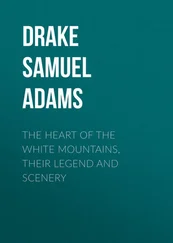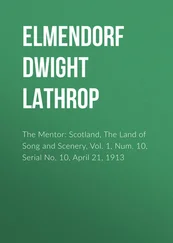Collins New Naturalist Library
4
Britain’s Structure and Scenery
L. Dudley Stamp

JAMES FISHER M.A.
JOHN GILMOUR M.A.
JULIAN HUXLEY M.A. D.Sc. F.R.S.
L. DUDLEY STAMP C.B.E., B.A. D.Sc.
PHOTOGRAPHIC EDITOR:
ERIC HOSKING F.R.P.S.
The aim of this series is to interest the general reader in the wild life of Britain by recapturing the inquiring spirit of the old naturalist. The Editors believe that the natural pride of the British public in the native fauna and flora, to which must be added concern for their conservation, are best fostered by maintaining a high standard of accuracy combined with clarity of exposition in presenting the results of modern scientific research. The plants and animals are described in relation to their homes and habitats and are portrayed in the full beauty of their natural colours, by the latest methods of colour photography and reproduction.
TO
A TRUE LOVER OF THE COUNTRYSIDE
THE RT. HON. LORD JUSTICE SCOTT, P.C.
TO SERVE UNDER WHOM FOR A YEAR
IS A LIBERAL EDUCATION
Cover Page
Title Page
Editors:
Editors’ Preface
Introduction
CHAPTER 1HIGHLAND BRITAIN AND LOWLAND BRITAIN
CHAPTER 2READING THE ROCKS
CHAPTER 3EARTH HISTORY—TIME AND LIFE
CHAPTER 4THE GEOLOGICAL MAP
CHAPTER 5LAND FORMS AND SCENERY THE WORK OF RIVERS
CHAPTER 6THE WORK OF THE SEA
CHAPTER 7THE SCENERY OF THE SEDIMENTARY ROCKS
CHAPTER 8THE SCENERY OF LIMESTONE COUNTRY
CHAPTER 9THE LAND FORMS OF VOLCANIC COUNTRY
CHAPTER 10THE SCENERY OF GLACIATION
CHAPTER 11SOILS
CHAPTER 12GEOGRAPHICAL EVOLUTION
CHAPTER 13THE PLIOCENE PERIOD
CHAPTER 14THE GREAT ICE AGE AND AFTER
CHAPTER 15THE REGIONS OF BRITAIN
CHAPTER 16THE WEALD
CHAPTER 17EAST ANGLIA AND THE FENS
CHAPTER 18THE ENGLISH SCARPLANDS
CHAPTER 19THE ENGLISH MIDLANDS
CHAPTER 20THE SOUTH-WEST
CHAPTER 21THE WELSH MASSIF
CHAPTER 22THE NORTH OF ENGLAND—THE LAKES AND THE PENNINES
CHAPTER 23SCOTLAND
CHAPTER 24IRELAND
Annotated Bibliography
Index
Photographic Insert
Acknowledgments
Copyright
About the Publisher
IT IS ONE of the principal objects of the NEW NATURALIST series to present in simple language to the lay reader the results of recent scientific work in the many fields covered by the general term “Natural History.” Another is to take the results of laboratory research into the realm of field studies and particularly to recapture the spirit of the old naturalists whose keen delight was in the study of animals and plants in their native haunts.
The present volume may be regarded in many respects as a background volume to the whole series in that it attempts to trace the evolution, through the many millions of years of geological time, of the geography of the British Isles and so to present a general view of the stage and setting of Britain’s Natural History.
The task has been rendered especially difficult for several reasons. In the first place it has been necessary to compress a large section of the science of geology into a very small space; in the second place it has been necessary to eliminate a whole scientific terminology which to the geologist makes for brevity and precision but which would be unfamiliar to the non-geologist. In addition, any attempt to reconstruct the geography of past ages is beset with pitfalls, so that the generalisations here presented may appear to have a definiteness which is not warranted by the facts. They must be regarded as liable to constant revision and even now, as the results of the borings undertaken in the intensive war-time search for oil are studied, they may be greatly modified.
THE EDITORS
THE WEALTH of a country’s fauna and flora is not to be measured by numbers of species alone. Its wealth lies rather in variety, and to a naturalist in the British Isles the fascination of the native fauna and flora is in the great variety to be found in a small space. Gilbert White’s immortal Natural History of Selborne is, in essence, the natural history of a single parish of a few square miles. Yet like many another English parish Selborne, at the western end of the Weald in Hampshire near the borders of Surrey and Sussex, embraces within its limited area many distinctly different habitats or environments, each with its characteristic and often contrasted plants and animals. On the one side lie the open, wind-swept chalk downs with their calcareous soils and lime-loving plants, on the other the coarse sands of the Lower Greensand formation with sterile, acid, hungry soils—too “hungry” to attract the farmer and so given over to heathland and woodland of oak, birch and pine—whilst between the two are the Gault vale with its heavy clay soils and the magnificent “foxmould” developed on the Upper Greensand and accounted one of the finest agricultural soils in the whole of Britain. Such contrasts within a single parish or group of parishes are by no means unusual—indeed parish boundaries were often drawn originally so as to include as great a variety as possible of types of land—and they are reflected in the relief or form of the ground, in soils, in the natural vegetation cover and its associated animal life as well as in the way man, though kept within certain limits, has adapted the natural environment to his own ends. Small differences of elevation, slope, aspect and shelter cause purely local variations in the climate giving rise to different “microclimates” in the area, but they are variations sufficient to spell success or failure in many a farming enterprise, just as they permit or prevent the survival of a given species of the wild flora or fauna.
Those who are accustomed to larger spheres are apt to be obsessed with the discovery that it is by no means difficult to travel by road or rail from coast to coast of Britain, from east to west or even from north to south, in a single day. Yet in 25 miles of such a journey may be found a variety of scenery only to be equalled in a journey of ten times that distance in other lands. The kaleidoscopic rapidity with which the British scene changes is well illustrated from our coastline. It has recently been calculated that the coastline of England and Wales alone—the deeply indented and island-fringed coastline of Scotland is much longer in proportion—is some 2751 miles in length. Within that length may be found mud-flats, sand-dunes, shingle beaches, raised beaches and drowned valleys, sheltered bays and stormy headlands, together with cliffs of the most varied types. The cliffs alone range from the crumbling or slippery boulder clay slopes but a few feet high along parts of the east coast to giants rising almost sheer for a thousand feet from the sea below ; in colour and material they range from the dazzling white chalk of the south and east, or the brilliant red of the New Red Sandstone of Torbay, to the majestic greys and ochres of the granite coasts or the forbidding grey and black of some of the slate cliffs. Inland the story is the same. In the Scottish Highlands it is easy to find a dozen square miles not only without a human habitation or track, but also where the foot of man rarely treads and which even scarcely knows the foot of one of his domestic animals. Yet another dozen square miles of a part of the English lowland may be almost as densely peopled as any similar area on the earth’s surface and one where wild nature seems almost to have been eliminated.
Читать дальше













